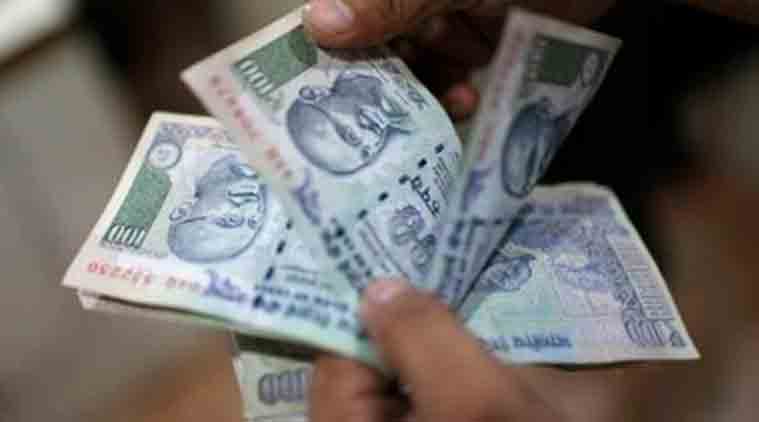These comprise deposits between Rs 2 lakh and Rs 80 lakh. A total of Rs 4.89 lakh crore, comprising deposits of over Rs 80 lakh, were entered into 1.48 lakh accounts.
REVENUE Secretary Hasmukh Adhia Thursday said deposits of Rs 2 lakh or more formed a sizeable chunk of the demonetised currency that found their way into bank accounts immediately after the November 8 announcement on withdrawal of Rs 500 and Rs 1,000 notes.
Multiple Deposits Between Rs 2 Lakh-Rs 2.5 Lakh Against Single PAN Number, Says Government
Asked if deposits of less than Rs 2 lakh constituted the majority deposits in accounts, Adhia said: “Na na, woh zyaada nahi hai. Rs 2 lakh se upar wale mein hi main hua hai. (No, that’s not big. The bulk of deposits were those above Rs 2 lakh.) And people thought Rs 2.5 lakh tak safe hai, so most of them have done Rs 2.25 lakh (deposits) in 10-15 accounts. We have cases in which 20 accounts are connected to a single PAN.”
Enforcing Rs 15-lakh cap on cash holding difficult; idea still being examined, says Hasmukh Adhia
Over two-thirds of the demonetised currency deposited in banks has come in the form of deposits over Rs 2 lakh — totalling around Rs 10.38 lakh crore.
“These are the immediate high-level cases, which apparently appear to be odd. The Operation Clean Money targets them in the first phase,” Adhia said a day after the Budget.
Deposits totalling Rs 5.48 lakh crore were made in 1.09 crore accounts. These comprise deposits between Rs 2 lakh and Rs 80 lakh. A total of Rs 4.89 lakh crore, comprising deposits of over Rs 80 lakh, were entered into 1.48 lakh accounts.
The government has also mined a deep data set of multiple deposits of between Rs 2 lakh and Rs 2.5 lakh in dozens of accounts against a single PAN number.
This has made the government’s task of nabbing the tax evader relatively easy. While a total of 18 lakh cases of suspect deposits have been identified by the department in the first phase, the Operation Clean Money would continue for the next two years, Adhia said.
“They (18 lakh cases) are all part of Operation Clean Money now. Whatever exercise we do and this is only the first phase, there will be phase two, phase three, phase four. It will go on for two years… so nobody should take it quietly that their turn has not come,” he said.
Many people deposited funds between Rs 2 lakh to less than Rs 2.5 lakh in multiple accounts, thinking these would not be caught. The government had initially said that tax department will not trouble people depositing up to Rs 2.5 lakh into their bank accounts, which is the exemption limit for each individual.
“(Rs 2.5 lakh exemption)… that was for genuine housewives, who may be having some savings… same name, same address mila hai, alag alag bank mein. All that computer can find out. Now, PAN is made compulsory . Everyone must do it before February 28.”
Adhia said the government has not issued any notices in these 18 lakh cases, but has asked the taxpayer to clarify about these on the electronic platform. It is possible that some or many of these could be genuine deposits and these depositors, he said, need not worry.
On Tuesday, the government launched the Swachh Dhan Abhiyan or Operation Clean Money and said it had identified 18 lakh persons who deposited amounts of Rs 5 lakh or more between November 9 and December 30 but whose income profiles did not match the amounts deposited.
Following up their efforts to unearth unaccounted money, tax authorities are also scrutinising these accounts and have asked taxpayers to revert to their queries within 10 days.
“So we are not saying you are are a criminal till they give the answer. They can only say, there may be mistakes also. It may have gone to a wrong person and he can say that I am exempt or he must have got a regularly paid income, there must be some mistake about it. It may not be his amount also, he can come and tell us that he doesn’t know who has deposited the money in his account. It may happen, so all these things will happen. But we are not considering them as criminals,” he said.
“That’s why we are giving them the first opportunity to reconcile online, without any notice also. It’s not even a notice, unlike what news reports said that 18 lakh people to get notice, it’s not notice. It’s just putting the data on the e-filing website in their e-filing account, put in their password and then see if there’s anything there,” he said.
Finance Minister Arun Jaitley, in his Budget speech Wednesday, said that deposits between Rs 2 lakh and Rs 80 lakh were made in about 1.09 crore accounts with an average deposit size of Rs 5.03 lakh during the period November 8-December 30. Also, deposits of more than Rs 80 lakh were made in 1.48 lakh accounts with average deposit size of Rs 3.31 crore, he said, adding that this data would help the government “immensely in expanding the tax net as well as increasing the revenues”. This results in a total of Rs 10.38 lakh crore deposits of more than Rs 2 lakh in each account.
While the government expects the demonetisation impact on the economy to be transient, this has given the government a warchest of data to widen the tax base significantly. “The main benefit (of demonetisation) which has come in is that money has lost its anonymity. We know exactly who is holding how much cash. It is a different thing that people have tried to fragment their cash into different accounts but we will try to map them on a computer and see what is happening. This will help us immensely,” .

No comments:
Post a Comment